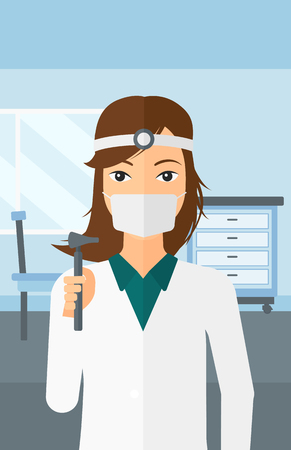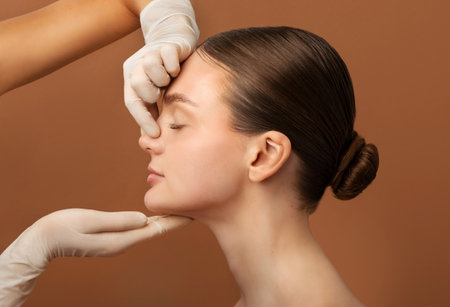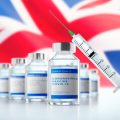Understanding Chemical Skin Rejuvenation and Its Effects
Chemical skin rejuvenation, more commonly known in the UK as chemical peels or resurfacing treatments, has become a staple in both clinical dermatology and high street aesthetic clinics. These procedures utilise controlled chemical solutions—ranging from mild alpha hydroxy acids to stronger trichloroacetic acid (TCA) or phenol—to exfoliate the outer layers of the skin. The main objective is to address concerns such as fine lines, pigmentation irregularities, acne scarring, and general dullness, delivering a fresher and more even complexion.
In British practice, light or superficial peels are often favoured for their minimal downtime, making them popular among individuals seeking subtle results with little disruption to daily routines. Medium-depth and deep peels are also available, typically administered by medically trained professionals due to their more intensive nature and longer recovery periods. Regardless of the peel’s strength, patients can expect certain predictable skin responses post-treatment: redness, tingling, tightness, and peeling or flaking are common during the initial healing phase. More advanced procedures may lead to swelling or temporary darkening before revealing improved texture and tone.
Understanding these typical outcomes—and knowing that each person’s response may differ—is crucial in preparing for effective aftercare. Adhering to proper post-peel protocols not only minimises risks such as infection or unwanted pigmentation but also promotes optimal healing and longer-lasting results. The following sections will detail best practices tailored for UK-based patients seeking safe and successful chemical skin rejuvenation.
2. Immediate Aftercare Steps Post-Treatment
Directly after a chemical skin rejuvenation procedure, your actions are critical to both comfort and optimal healing. The treated skin is highly sensitive and vulnerable to environmental stressors such as UV rays, pollution, and temperature extremes. To safeguard your results and avoid complications, follow these immediate aftercare recommendations:
Key Actions to Take Right After Treatment
| Action | Purpose | UK-Specific Tips |
|---|---|---|
| Avoid Sun Exposure | Prevents pigmentation and irritation on freshly treated skin | Wear a broad-brimmed hat and apply a high-SPF (30+) sunscreen, even during cloudy British days |
| Soothe the Skin | Reduces discomfort and inflammation post-procedure | Use fragrance-free, gentle moisturisers common in UK pharmacies (e.g., E45 or Cetaphil) |
| Avoid Heat Sources | Keeps pores closed and reduces redness/swelling | Skip hot baths, saunas, or direct heat for at least 48 hours post-treatment |
| No Touching or Picking | Prevents infection and scarring during healing phase | If flaking occurs, let it shed naturally without interference |
| Stay Hydrated | Supports skin regeneration from within | Drink plenty of water; herbal teas are also beneficial in the UK’s cooler climate |
Practical Considerations for the First 24 Hours
- Cleansing: Use tepid water and a very mild cleanser—avoid exfoliants or alcohol-based products.
- Makeup: Refrain from applying makeup until your practitioner confirms it is safe, typically after 24-48 hours.
- Physical Activity: Avoid strenuous exercise to reduce sweating and possible irritation of sensitive skin.
- Public Transport: If commuting via the Tube or bus, shield your face with a scarf to minimise contact with urban pollutants.
The Importance of Consistency in Aftercare Routine
Your diligence in following these steps immediately after chemical skin rejuvenation will set the foundation for effective recovery and reduce the likelihood of complications. Adhering to local advice—such as adjusting routines for the unpredictable British weather—will further enhance your healing process.

3. Managing Common Reactions and Side Effects
Chemical skin rejuvenation, while highly effective, often brings about a range of post-procedure reactions that can be concerning if not properly managed. Recognising and addressing these common side effects is crucial for promoting optimal healing and minimising complications.
Redness
Redness is a typical response following chemical peels or similar treatments and may persist for several days, depending on the depth of the procedure. While mild redness is expected, prolonged or severe erythema could indicate irritation or an adverse reaction. To manage redness effectively, avoid excessive heat exposure (including hot showers and saunas), and opt for gentle, fragrance-free moisturisers. Applying cold compresses intermittently can also provide relief. If redness intensifies or is accompanied by swelling, consult your practitioner for further advice.
Peeling and Flaking
Peeling is a sign that the skin is renewing itself. Resist the urge to manually remove flaking skin as this can lead to scarring or pigmentation issues. Instead, keep the skin well-hydrated using recommended emollients and allow natural exfoliation to occur. Should peeling become excessive or uncomfortable, seek professional guidance before introducing any over-the-counter remedies.
Sensitivity
Heightened sensitivity post-procedure is common, with many patients reporting stinging or tightness, particularly when using skincare products. Transition to mild cleansers and avoid active ingredients such as retinoids, alpha hydroxy acids (AHAs), or vitamin C until your practitioner advises otherwise. It’s also wise to avoid direct sunlight; use broad-spectrum sunscreen even on cloudy British days to shield the delicate new skin from UV damage.
Other Frequent Experiences
Itching, dryness, or minor swelling may also arise in the days following treatment. These symptoms typically resolve without intervention but can be managed with simple measures such as applying a cool compress or using soothing balms approved by your clinician. If you notice persistent discomfort or signs of infection—such as pus, spreading redness, or fever—seek medical attention promptly.
Summary
Properly recognising and managing the usual reactions after chemical skin rejuvenation helps ensure a smoother recovery journey. By following tailored aftercare guidance and responding promptly to unusual symptoms, you support both your immediate comfort and long-term results.
4. Essential Products and Ingredients to Use and Avoid
During the healing phase following chemical skin rejuvenation, such as a chemical peel or advanced resurfacing treatment, careful selection of skincare products is crucial for both minimising complications and supporting optimal recovery. In the UK, with its unique climate and product landscape, understanding which topical ingredients are beneficial—and which should be strictly avoided—can make a significant difference in outcome.
Products and Ingredients to Use
Opt for gentle, non-irritating formulations that promote hydration, barrier repair, and soothing of sensitised skin. Below is an overview of recommended options commonly available in the UK:
| Product/Ingredient Type | Recommended Examples (UK) | Benefits |
|---|---|---|
| Gentle Cleanser | Cetaphil Gentle Skin Cleanser, CeraVe Hydrating Cleanser | Cleanses without stripping moisture or irritating sensitive skin |
| Moisturiser (Barrier Repair) | La Roche-Posay Cicaplast Baume B5, E45 Cream | Supports skin repair, reduces transepidermal water loss |
| Fragrance-Free Hydrators | Avene Thermal Spring Water Spray, Simple Hydrating Light Moisturiser | Hydrates and soothes without risk of irritation from fragrances or dyes |
| Sunscreen (Broad Spectrum SPF 30+) | Altruist Dermatologist Sunscreen SPF 50, Ultrasun Face SPF 30 | Protects vulnerable skin from UV-induced pigmentation and damage |
| Occlusive Ointments (if advised by practitioner) | Aquaphor Healing Ointment, Vaseline Original Petroleum Jelly | Locks in moisture and aids healing in compromised areas |
Ingredients and Products to Avoid During Healing Phase
Certain active ingredients can exacerbate irritation or delay healing after chemical rejuvenation. It’s important to check labels carefully—even in trusted UK brands—and suspend use until your practitioner gives clearance.
| Ingredient/Product Type | Common Examples (UK) | Risks if Used Prematurely |
|---|---|---|
| Retinoids & Retinol Derivatives | The Ordinary Retinol 0.2% in Squalane, Medik8 Crystal Retinal | Irritation, delayed barrier recovery, increased sensitivity |
| Exfoliating Acids (AHA/BHA) | Nip + Fab Glycolic Fix Pads, Paula’s Choice Skin Perfecting 2% BHA Liquid Exfoliant | Burning, stinging, disruption of healing process |
| Vitamin C Serums (Ascorbic Acid) | LOréal Paris Revitalift Vitamin C Serum, La Roche-Posay Pure Vitamin C10 Serum | Potential for stinging and further inflammation during initial healing phase |
| Benzoyl Peroxide & Strong Acne Treatments | Differin Gel (Adapalene), Acnecide Benzoyl Peroxide Gel 5% | Dramatic dryness and irritation on freshly treated skin surface |
| Scented/Alcohol-Heavy Toners & Astringents | NIVEA Refreshing Toner, Boots Witch Hazel Toner | Irritation due to fragrance and alcohol content; can worsen sensitivity post-procedure |
Consultation with Your Practitioner is Key
The above guidelines offer a general framework for effective aftercare post-chemical rejuvenation. However, individual recommendations may vary based on the depth of the procedure, your skin type, and any pre-existing conditions. Always consult your practitioner or dermatologist before introducing new products or resuming actives. This tailored approach will help ensure complication-free healing while maximising the results of your treatment.
5. Lifestyle Adjustments for Optimal Healing
Making thoughtful lifestyle changes is crucial for supporting your skin’s recovery after a chemical rejuvenation treatment, particularly when considering the unique climate and daily routines common in the UK.
Sun Protection: A Non-Negotiable Essential
Post-procedure skin is highly sensitive to UV exposure, increasing the risk of pigmentation and delayed healing. In Britain, where overcast skies can create a false sense of security, it’s vital to apply a broad-spectrum SPF 30 or higher every morning—even on cloudy days. Reapply sunscreen if you spend extended periods outdoors, and consider wearing a wide-brimmed hat or seeking shade during peak midday hours.
Tailoring Your Skincare Regime to the British Climate
The UK’s variable weather—often damp and cold—can impact your skin’s recovery process. Swap out harsh cleansers for gentle, fragrance-free formulas that help maintain the skin barrier. Opt for richer, hydrating moisturisers to combat indoor heating and environmental dryness. Avoid exfoliating products or active ingredients such as retinol and acids until your practitioner advises it is safe to reintroduce them.
Adapting Daily Habits for Recovery
Minimise hot showers and baths, as excessive heat can worsen inflammation and disrupt healing. Stay hydrated by drinking plenty of water, which supports your skin from within. Resist the temptation to touch or pick at peeling skin; let natural exfoliation occur without interference.
Practical Self-Care Tips
Change pillowcases regularly to reduce bacterial transfer, and opt for soft, clean fabrics that won’t irritate recovering skin. If you commute by public transport—a daily reality for many in Britain—consider carrying a travel-sized facial mist to refresh your skin against pollution and dry air. Finally, prioritise adequate sleep to allow cellular repair processes to work optimally overnight.
By integrating these tailored lifestyle adjustments into your routine, you’ll be helping your skin heal efficiently while reducing the likelihood of complications—ensuring the benefits of your chemical rejuvenation treatment are long-lasting and visible.
6. Identifying and Managing Complications
Recognising Early Warning Signs
After undergoing chemical skin rejuvenation, it is crucial to remain vigilant for any signs of complications during the healing process. While mild redness, slight swelling, and minor peeling are expected after most chemical peels, more severe symptoms can signal underlying issues. Be alert for persistent redness lasting beyond a week, increasing pain, pronounced swelling, the development of blisters or pus, and sudden changes in skin colour such as darkening (hyperpigmentation) or whitening (hypopigmentation).
Differentiating Normal Healing from Concerning Symptoms
Understanding what constitutes a normal response versus a complication is essential for optimal recovery. Typical healing involves gradual fading of redness, controlled peeling, and some tightness as new skin emerges. However, if you notice escalating discomfort, spreading rash, intense itching, or areas that fail to heal, these could indicate infection or an adverse reaction. Take special care with sensitive skin types or if you have a history of allergies.
When to Seek Professional Help
If you experience symptoms such as fever, chills, extensive oozing, severe pain unresponsive to over-the-counter remedies, or rapidly worsening appearance of the treated area, it is imperative to contact your practitioner or seek medical attention immediately. Early intervention can prevent more serious outcomes and help preserve the results of your treatment. In the UK context, don’t hesitate to consult your local GP or NHS walk-in centre if in doubt.
Proactive Steps for Peace of Mind
Document your progress with photographs and keep a written record of any unusual sensations or changes. This can be invaluable for healthcare professionals assessing your situation. Remember: prompt reporting and action are key to resolving complications efficiently and maintaining healthy skin post-rejuvenation.
7. Long-term Skin Health and Maintenance
Maintaining the results of chemical skin rejuvenation requires a proactive approach to long-term skin health, underpinned by consistent aftercare and lifestyle choices that reflect both modern dermatological guidance and British sensibilities towards wellness. Here are some practical tips for ensuring your skin remains healthy, radiant, and resilient after treatment:
Follow-up Care: The Cornerstone of Lasting Results
Regular follow-up appointments with your skincare specialist or dermatologist are essential. These visits allow for professional assessment of your skin’s progress, identification of any delayed complications, and timely intervention if necessary. In the UK, it is common practice to schedule an initial review within 2-4 weeks post-treatment, followed by routine check-ins every three to six months depending on individual needs and the type of peel administered.
Recommended Treatment Intervals
To optimise the benefits of chemical peels without compromising skin integrity, adhere to recommended intervals between sessions. Light superficial peels can generally be repeated every four to six weeks, while medium-depth treatments may require a gap of three to six months. Deeper peels should only be performed once per year or as specifically advised by your clinician. Always discuss your personal goals and medical history before planning subsequent procedures.
Daily Skincare Regimen
Adopt a daily skincare routine that prioritises gentle cleansing, hydration, and broad-spectrum sun protection. Opt for fragrance-free cleansers and barrier-supportive moisturisers, particularly those containing ceramides or hyaluronic acid. SPF 30 or higher is non-negotiable in the unpredictable British climate—even on overcast days—to guard against UV-induced pigmentation and premature ageing.
Lifestyle Adjustments
Long-term skin health is influenced by more than topical products alone. Avoid smoking, limit alcohol intake, manage stress through mindfulness or exercise, and ensure adequate hydration—habits that collectively support skin regeneration and resilience. A balanced diet rich in antioxidants (think berries, leafy greens, and oily fish) also contributes to a luminous complexion.
When to Seek Professional Advice
If you notice persistent redness, unusual pigmentation changes, or signs of infection beyond the normal recovery window, seek prompt medical attention. Early intervention can prevent minor issues from developing into more significant complications.
Conclusion: Invest in Your Skins Future
The key to sustained improvement after chemical rejuvenation lies in diligent aftercare, ongoing communication with trusted professionals, and a holistic approach to wellbeing. By integrating these practices into your daily life, you can enjoy smoother, healthier skin long after your initial treatment—embodying both the science and spirit of contemporary British skincare.

